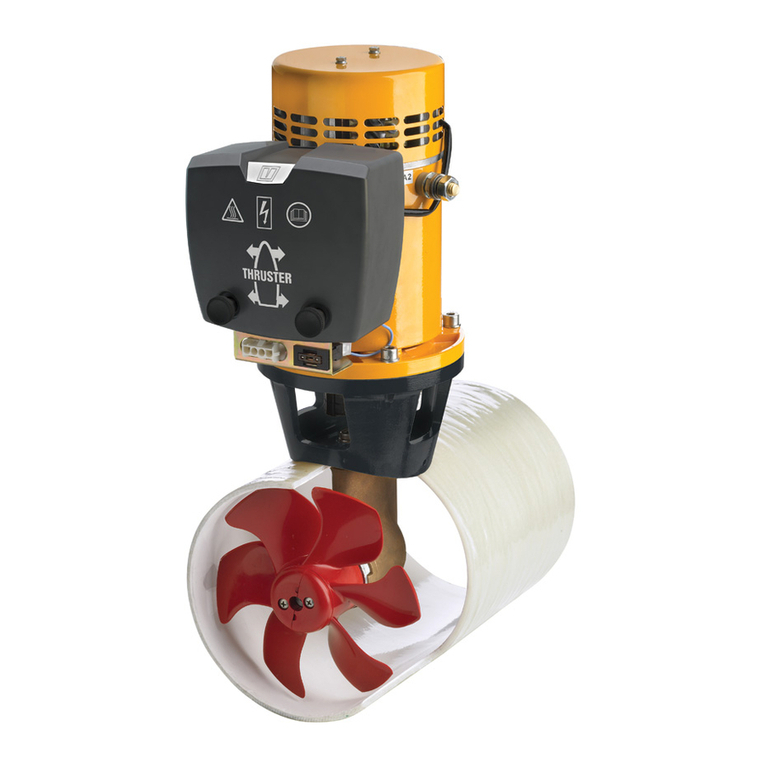2 - Fit the UPPER bracket first on canoe, traditional overhanging and exactly vertical
sterns; fit the LOWER bracket first on forward-raked and sugar scoop sterns.
3 - Fit the pendulum rudder module onto the auxiliary rudder module.
4 - Align the system: the windvane shaft 140 must be vertical!
THE SECOND AUXILIARY RUDDER BRACKET
5 - Fit the remaining auxiliary rudder bracket.
1.5 INSTALLATION: COMPREHENSIVE GUIDE
−Remember the five criteria.
1.5.1 HEIGHT ABOVE THE WATERLINE
−The rudder shaft has been manufactured to the correct length for your boat.
−The dynamic waterline should cover the auxiliary rudder blade.
−The rudder will project some distance above the static waterline.
−Ideal installation height: the top of the auxiliary rudder blade should be about 10-
20 cm/4-8 in above the static waterline.
1.5.2 VERTICAL, CANOE AND TRADITIONAL OVERHANGING STERNS
1.5.2.1 MAKING THE FIRST CONNECTION
−Install the UPPER bracket first.
−Is the toe rail likely to be useful or get in the way?
−Decide whether to fit the upper bracket to the toe rail at deck height or through the
transom below deck level (see 1.5.1 Height above the Waterline).
1.5.2.2 THE MOUNTING BLOCK
−We have prepared a wooden block to help you with the installation process. The
block shows the precise clearance between the mounting faces on crown 500.
−On the block we have mounted either two brackets 900/910 or brackets 900/910
plus extension 920.
−Locate the block with the bracket/extensions and clamps 860 on the transom at the
appropriate installation height for the UPPER bracket.
−CAUTION: is everything ready on the inside of the transom?
−Rotate the four clamps 860 into place against the transom (use the mallet if
required).
−Start by drilling a single hole (predrill with the 9 mm bit then complete with the
10.5 mm bit).
−CAUTION: is everything still ok on the inside of the transom?
−Pass a bolt through the hole just drilled to hold the bracket in place.
−Align the bracket (level).
−Predrill three holes through the clamps (9 mm bit).
−Remove the bracket.
−Drill out all the holes with the 10.5 mm bit.
−Place sealing compound (Sikaflex) around each hole.
−Set the 60 mm diameter plastic discs on the Sikaflex compound.
−Fasten the bracket with all four bolts.
−Working inside the hull, set the washers on the bolt ends and tighten the
nuts/locknuts.




























